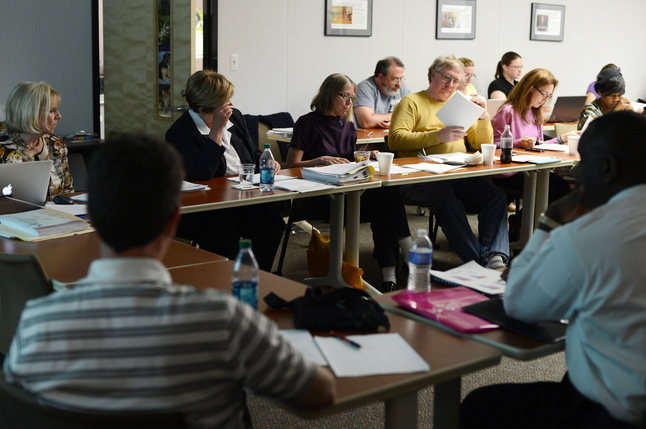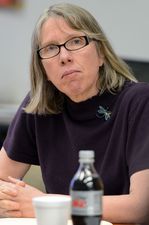
The Ann Arbor school board will vote on a new committee structure and time limits Wednesday night.
Melanie Maxwell | AnnArbor.com file photo
The Ann Arbor Board of Education is expected to vote Wednesday on a number of policy changes that would restrict meetings to five hours and change its committee structure.
School board President Deb Mexicotte presented a number of policy changes before spring break last week that trustees hope will prevent the board from consistently meeting past 1 a.m.
The changes, which were proposed on March 27, include a five-hour time limit for regular board meetings, organizational meetings, study sessions and special meetings, as well as replacing the Committee of the Whole structure with a maximum of four standing committees. Regular meetings start at 7 p.m., so the five-hour time limit would mean most public meetings should conclude by midnight.
As the board has juggled increased financial challenges and lengthy reports from administration, trustees have met until 1 a.m. and 2 a.m. for several months, with the Feb. 27 meeting adjourning at about 3:15 a.m. This is a challenge for board members who have jobs outside of the school district and Superintendent Patricia Green and her executive cabinet members, who typically are required to stay through the end of the board meeting.
Standing committee meetings would not extend longer than three hours past their official start-time, according to the proposed policies. No more than three trustees would serve on a single standing committee for sub-quorum status, which would release the board from typical posting requirements and from keeping the meetings open to the public.
Trustee Susan Baskett had a number of concerns about the idea of sub-quorum meetings and not allowing the public to attend. The way the new policy is written is that giving notice is “not required.” Baskett said she hopes this does not mean the board won’t tell the public when its meetings will occur.
Mexicotte said the board will need to have a more in-depth conversation about posting.
“Transparency is something we’ve been very committed to. However, we’ve also acknowledged there are times when it is important to have candid conversations, like in executive session where you need to be able to have some level of confidentiality,” she said, adding a sub-quorum structure gives the board the freedom to decide whether posting is a “must” or something that could be done on a case-by-case basis, depending on the agenda.

Deb Mexicotte
The committees’ missions still are under consideration, but the topics could be some combination of the following: student achievement, budget and finance, governance, performance, planning and an executive committee.
The executive committee would be comprised of the board president, the superintendent and the chairmen of the other committees for the purpose of agenda planning; authoring or reviewing amendments to board policies or bylaws; or reviewing items referred to them by the individual standing committees.
Other changes to the board’s meeting procedures could include moving critical board action items and decisions to the beginning of the agenda to “ensure the smooth and timely operation of the district” and public participation and engagement, according to the proposed policy adjustments. The board does not get to action items on its agendas now until approximately the last two hours of its meetings.
Time limits also were tossed around for administrative presentations and board member discussions, with each school trustee being permitted a set number of minutes for comments and an increased effort to have questions answered in the days leading up to the meetings.
Across the table, school trustees largely were in favor of imposing time limits and most were on board with changing the committee structure. The primary goal of reverting back to standing committees from the Committee of the Whole is increasing efficiency.
The board went to a Committee of the Whole structure in the fall of 2011 because it had a number of new trustees who recently had been elected, Mexicotte said, adding trustees felt there was a benefit to having “everyone hear everything.”
“One of the things that we have in a (standing) committee structure is the ability to target the agenda a little better,” Mexicotte said. “ You also have to trust that a subset of the board has done the deep work and that you get a good executive summary. And you are able to get your questions answered beforehand and then that you’re able to move with some confidence.
“ I think now we realize that the (multiple) committee structure does streamline the work and does allow for a deeper dive in an avenue that is not the regular board meeting and in the (regular meeting) we should focus our agenda more closely around those questions and issues that need to be brought forward (for action),” Mexicotte said.
The board also has been working on improving its trust issues. At its March 27 meeting, the board passed an “affirmation of boardsmanship,” reaffirming what is expected of all trustees as leaders and recommitting to adhere to certain standards, principles and behaviors at the board table.
Danielle Arndt covers K-12 education for AnnArbor.com. Follow her on Twitter @DanielleArndt or email her at daniellearndt@annarbor.com.